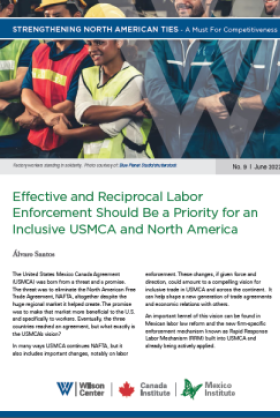Effective and Reciprocal Labor Enforcement Should Be a Priority for an Inclusive USMCA and North America



The United States Mexico Canada Agreement (USMCA) was born from a threat and a promise. The threat was to eliminate the North American Free Trade Agreement, NAFTA, altogether despite the huge regional market it helped create. The promise was to make that market more beneficial to the US and specifically to workers. Eventually, the three countries reached an agreement, but what exactly is the USMCA’s vision?
This essay is part of the series, "Strengthening North American Ties - A Must For Competitiveness," by the Wilson Center's Mexico and Canada Institutes.
Author


Mexico Institute
The Mexico Institute seeks to improve understanding, communication, and cooperation between Mexico and the United States by promoting original research, encouraging public discussion, and proposing policy options for enhancing the bilateral relationship. A binational Advisory Board, chaired by Luis Téllez and Earl Anthony Wayne, oversees the work of the Mexico Institute. Read more


Canada Institute
The mission of the Wilson Center's Canada Institute is to raise the level of knowledge of Canada in the United States, particularly within the Washington, DC policy community. Research projects, initiatives, podcasts, and publications cover contemporary Canada, US-Canadian relations, North American political economy, and Canada's global role as it intersects with US national interests. Read more




